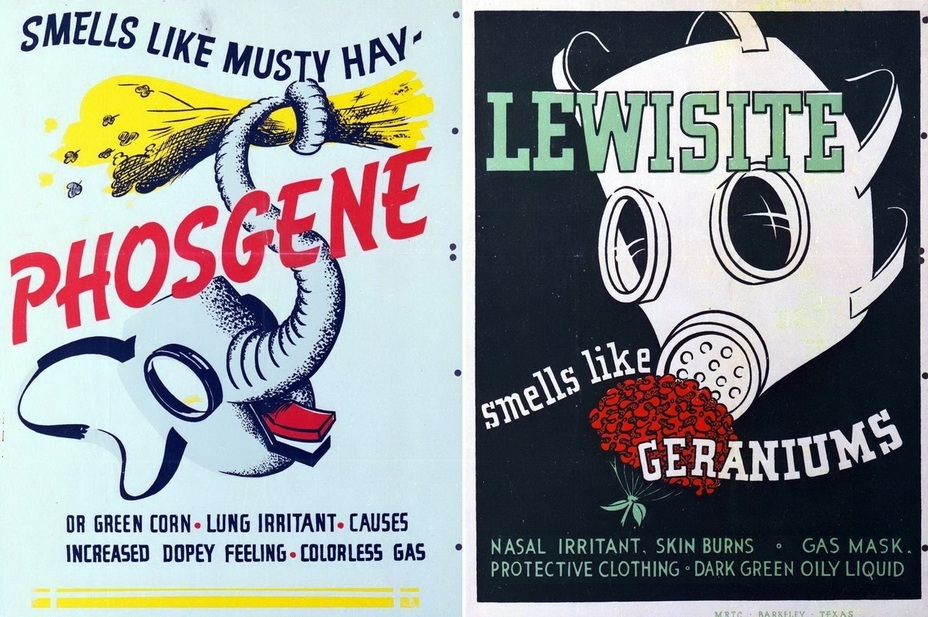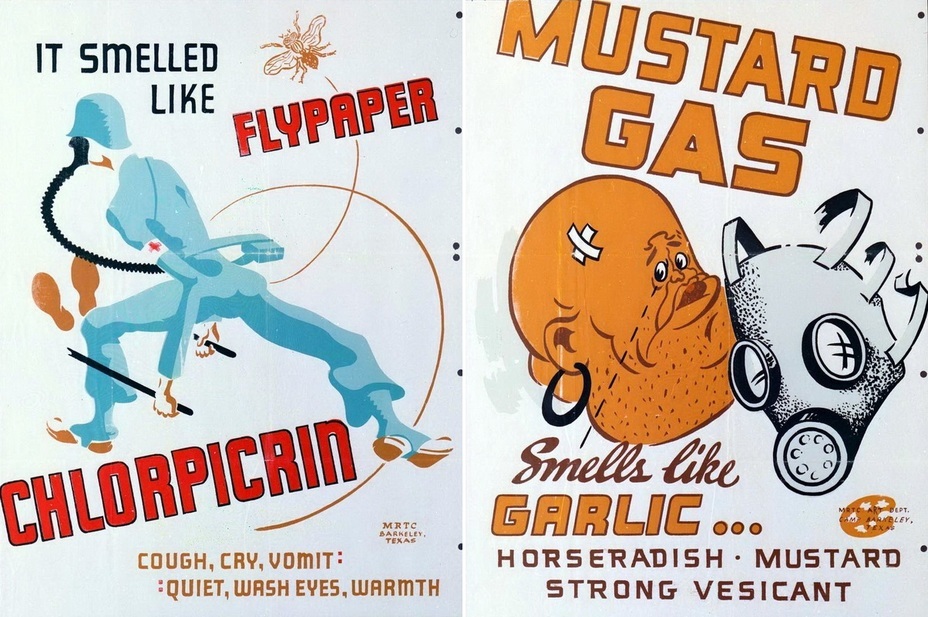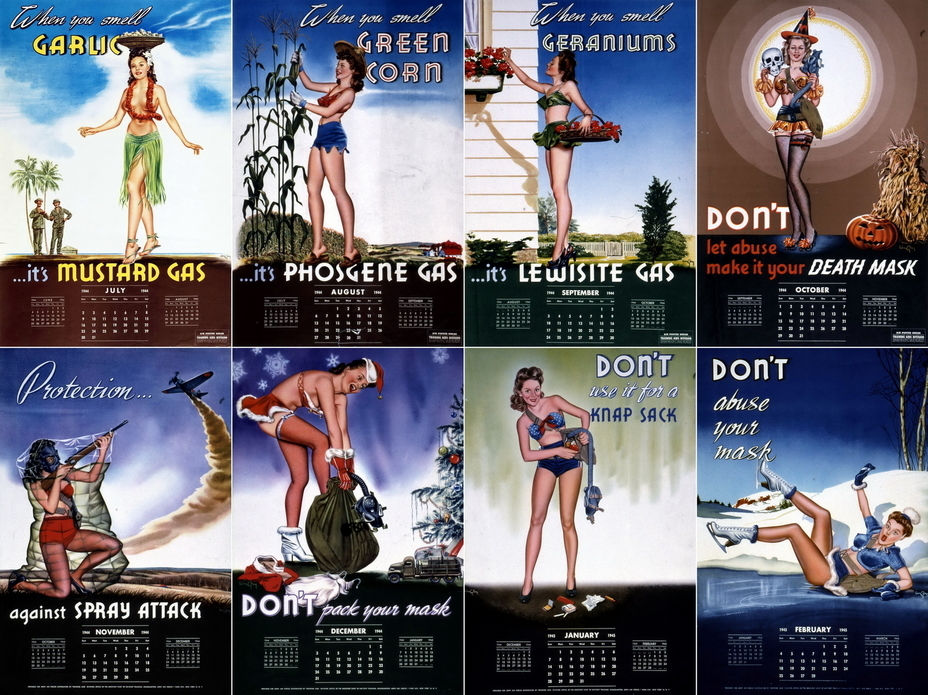The First World War, with its technical innovations, predetermined the directions of preparation for future conflicts. Few doubted that the horrific gas attacks would repeat themselves in the impending World War II. Most of the world's leading armies paid a lot of attention to chemical protection, and visual agitation played an important role in it.
Americans also managed to «sniff the gas» on the European battlefields of the First World War, and therefore decided to explain to the soldiers in advance what it smells like, and what actions should be taken in each case. Notable is a small series of four posters produced by the Medical Training Center at the military base in Camp Berkeley, Texas.

The posters were focused on four chemical weapons and featured phosgene, lewisite, mustard gas, and chloropicrin. Three of them were used in the First World War, and lewisite was a latecomer. Most of the victims of chemical weapons suffered from phosgene, which attacks the lungs and mucous membranes, and leads to suffocation. The soldiers were warned that chemical weapons have the ordinary, completely familiar smells of musty hay, green corn, geranium, garlic, or flypaper.

The «antichemical» posters published in the second half of 1944 by the US Air Force can be called true masterpieces. Firstly, they were made in the form of a calendar for the quarter, and secondly, they undoubtedly raised the morale of the brave aviators (click on the picture to view the enlarged version).

It is difficult to say whether anyone thought about what a young lady in a gas mask and a bikini would look like after being in a cloud of mustard gas, as well as how effective it would be to shoot at Japanese planes from a twenty-two, packed in a bag. But in general, the posters showcased the necessary things – the soldiers were reminded to take care of the gas mask, not to lose it, and not to use the gas mask bag as a handbag.




